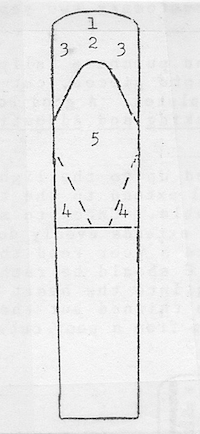Monday, November 12, 2018
 In my somewhat lengthy career I have had the opportunity to serve as the conductor of bands ranging from the beginning elementary level to one recognized as among the most talented in the world. Among them all, there is the common thread that perhaps one of the most important things we do is to teach them how to play musically and then to let them do it. We want our musicians to play the music technically correct, but it is our responsibility as their conductor to make sure that doing so will result in a performance we will not want to listen to if there is no emotion or musicality included in their presentation. This can hold true at all levels of proficiency. (Think of them playing Mary Had Little Lamb in a 'box-like' fashion or with emotional phrasing and direction.) I ask the performers to shape the phrases they are playing as they think it should be. The performers are then more committed to what they are doing. This will include each phrase having a direction, a change in the dynamics in the line, a musically pleasant quality of tone, intonation, and dynamic direction. When they do that, it is seldom I have to suggest they alter what they are doing to make it more musical.
In my somewhat lengthy career I have had the opportunity to serve as the conductor of bands ranging from the beginning elementary level to one recognized as among the most talented in the world. Among them all, there is the common thread that perhaps one of the most important things we do is to teach them how to play musically and then to let them do it. We want our musicians to play the music technically correct, but it is our responsibility as their conductor to make sure that doing so will result in a performance we will not want to listen to if there is no emotion or musicality included in their presentation. This can hold true at all levels of proficiency. (Think of them playing Mary Had Little Lamb in a 'box-like' fashion or with emotional phrasing and direction.) I ask the performers to shape the phrases they are playing as they think it should be. The performers are then more committed to what they are doing. This will include each phrase having a direction, a change in the dynamics in the line, a musically pleasant quality of tone, intonation, and dynamic direction. When they do that, it is seldom I have to suggest they alter what they are doing to make it more musical.
Please understand that this is not taking away the composers' intentions. It is, rather, enhancing what they have written. You will be surprised what happens when you let all of your performers have the opportunity to put themselves in the musical shape of the composition. They then have personal ownership in what they are doing and are not just recreating what you have told them to do. The interest level in the rehearsal will be vastly improved and the final performance with be spectacular!
The selection of the proper reed to fit your individual mouthpiece and embouchure is of vital importance to successful performance. The best cane has a golden yellow-brown bark. Reeds with a few dark brown spots on the back often indicate a superior piece of cane. Try to avoid greenish-yellow reeds because that indicates that the cane was cut after one year's growth instead of the customary two years needed for correct seasoning. In selecting a commercial reed, first hold the reed up to the light. The fibers of the grain should be straight and will extend to the tip of the reed. Course fibers are usually not desirable. Check to see that the light forms an inverted V or U shape that extends evenly down both sides. Any extreme irregularity will indicate a poor reed that probably cannot be adjusted. The center of the U should be rather consistently dark with no light streaks extending into the heart of the reed. Always remember that dark places can be thinned but there is no way possible to add depth that may be missing from a poor cut.
Test the tip of the reed by carefully running it across your fingernail. See that the tip strength is even and that no split in the reed. Be careful not to damage the tip.
Look at the butt end of the reed to see that the cane has a high arch. A flat arch will indicate the reed was cut from too large a piece of cane. Check the bark to see that it is hard. Immature bark can be dented with the thumbnail.
Commercial reed strength is designated by number with an average strength being #3. Beginning players should use a smaller number and advanced performers perhaps larger. The strength used will depend on the mouthpiece facing and the development of the embouchure. The larger the tip opening, the smaller strength of the reed.
The true test is in playing the reed. Most reeds will become slightly softer in strength after moistening. Check all registers of the instrument with the reed. Check evenness of balance by rotating the instrument to the right and blowing, then to the left. If one side blows harder that the other, remove a slight amount of cane from the hard side. An unbalanced reed will not vibrate evenly and is apt to cause frequent "squeaks" or harmonics. Squeaks may also be caused by a thin spot in the center of the tip.
All final adjustments on reeds should be made with Dutch rush. Dutch rush is a green weed which grows wild and may be purchased or found in sandy wet areas, especially in central Missouri. The stalk is in sections much like cane and is file-like. Soak the rush and flatten it to work on your reed. Apply pressure with your forefinger to remove small amounts of cane in the desired areas. Dutch rush may be purchased from most music stores. Avoid the use of sandpaper because it leaves grooves in the cane. A sharp knife may be used when you desire to remove larger amounts of cane.

To adjust your reed, first determine exactly what is wrong with the way that it plays, then set out to correct only the area that needs adjusting. Many reeds are ruined by improper scraping. Below is a general guide to improve various factors. You'll need a small piece of plate glass, Dutch rush, reed knife, & reed trimmer.
Remove a slight amount of cane from the areas indicated to correct these deficiencies.
- Highest notes are sharp and hard to blow.
- Throat tones are unresponsive. Be very careful not to remove too much!
- Low tones are harsh; poor response.
- Poor staccato throughout; does not respond well.
- Do not touch this area unless the reed is too stiff overall. This is the heart of the reed and provides the core and body of the tone.
Enjoy your performances with a free blowing, evenly balanced reed which produces a rich warm sound!
| Russ Coleman became the band director at Central Missouri State College (now University of Central Missouri) in 1964 and Chairman of the Music department in 1975. Upon his retirement in 1996 his bands had performed twice for the prestigious American Bandmasters Association convention, twice for the Music Educators National Association, Southwest Division Conference and also for the College Band Directors National Association Conference. Additionally his band performed eight times for the Missouri Music Educators Conference. Russ is 90 years young and still active in the Warrensburg area as the founder and conductor of the Warrensburg Community Band since its beginning in 1984. |


